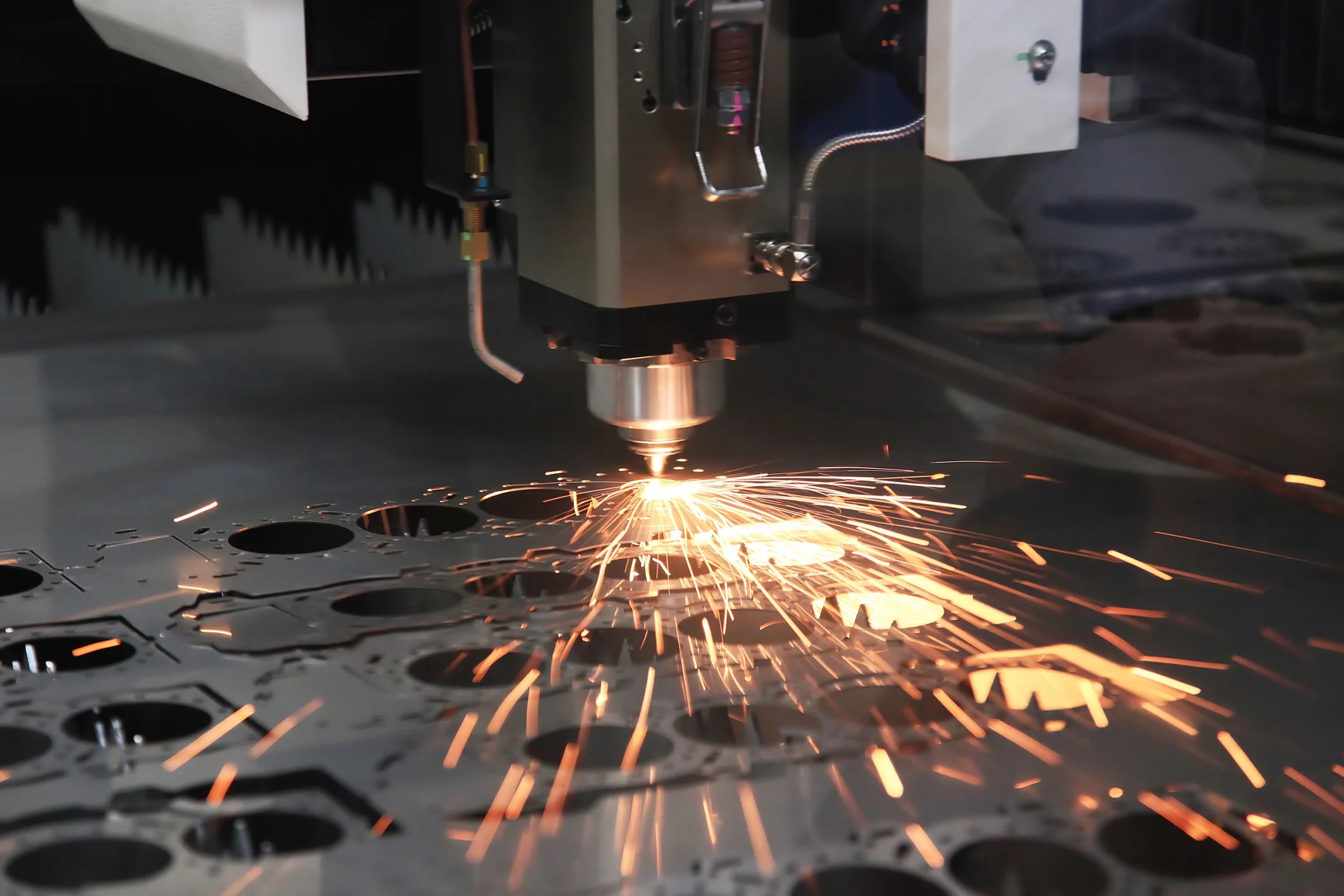The word laser is an acronym, which means Light Amplification By Stimulated Emission of Radiation. Gordon Gould, an American physicist, coined the term in 1959. That’s 64 years ago in 2023.I can bet you didn’t know laser technology has lasted that long. After all, mainstream media associates laser technology with sci-fi movies —Star Wars— and anti-infiltration traps in action movies. But it will surprise you to know there are at least 25,000 laser-cutting applications. We’ve watched this industry take shape. We know you must learn the evolution of laser technology to understand future developments. And we are here to help. This article helps you rewind the history of laser technology and shows you the latest developments in this decade. But first, let’s start with an explanation.
What is Laser Technology?
As we’ve previously mentioned, the term laser is a shortened version of “light amplification by stimulated emission of radiation.” Laser technology is the use of lasers for practical purposes. Here’s how it works. Imagine you’ve got a flashlight. But unlike regular flashlights, your flashlight doesn’t spread out. It travels in a straight line and has a single color. In other words, it’s coherent and concentrated. Think of the red-line traps you see in action movies. Now. What makes your flashlight interesting is it can cut through metals, perform delicate surgery, and send signals to electronic devices. If you ever get such a flashlight, do know that it uses laser technology.
Laser Technology for Laser Cutting
Laser technology is the application of lasers to problem-solving. Laser cutting is the use of laser technology for cutting, engraving, or etching materials like metal, wood, plastic, and acrylic.
Look at how it works:
- Step 1: Generate a laser beam
- Step 2: Direct the laser beam to the material you want to cut, etch, or engrave.
- Step 3: The laser beam cuts etch, and engraves the material.
In reality, you’re not involved in this process. Modern-day laser cutting machines use CAD (Computer Aided Design) programs. All you’ve got to do is create the design on your computer. Place the material you want to use in the laser cutting machine. And click on print.
Evolution of Laser Cutting Technology: The TimelineLaser Technology in the Early 20th Century— Inception
Albert Einstein’s theory of stimulated emission marked the inception of the pre-laser era, an era of research and development. This theory explained how photons could stimulate atoms to produce light. But it was in 1958, 41 years later, that a major development took place. Arthur Schawlow and Charles Townes, researchers at Bell Labs, published a paper. This paper outlined the basic principles of laser technology. Two years later in 1960, Theodore Mainam, a researcher at Hughes Research Laboratory, created the first working laser. He used synthetic ruby crystals to generate red beams.
Introduction of Gas (CO2) Lasers
Bell labs were not done with laser technology. In 1964, Kumar Patel, a researcher at Bell Labs, introduced the CO2 gas lasers. These lasers efficiently convert electrical energy to laser light. Patel’s work made laser technology practical for thermal cutting. In other words, it made laser technology useful for industrial applications such as material processing, cutting, and welding.
Historical Background of Laser Cutting Applications
After Kumar Patel’s innovation, Western Electric, the manufacturing and supply unit of Bell Labs, was the first to use laser cutting machines. In 1965, they used laser-cutting machines to drill holes in diamond dies. Two years later, in 1967, Peter Houldcroft, the then Deputy Scientific Director at The Welding Institute (TWI) in Cambridge, conducted the first experiment in laser processing of materials.
Houldcroft used oxygen-assisted gas lasers to cut a 1mm thick steel sheet. This experiment marked the use of laser technology material processing. After Houldcroft’s experiment, In 1969, Boeing, an American company, became the first company to integrate laser-cutting into its production lines. Laser cutting took a new turn in the next decade. Prima Industrie, an Italian company, invented the first 3D laser-cutting process. They used a 5-axes rotation system.
Developments in the Millennial Generation 1980s – Early 2000.
Laser-cutting technology moved from research labs to industrial use in the 1980s. Companies like Ferranti, General Motors, and Boeing pioneered the use of laser cutting for welding, fabrication, and cutting. Similarly, companies like Synrad, Trumpf, and Coherent were the first movers in the manufacture of industrial systems for laser cutting.
Introduction of Fibre Lasers
The 90s was a decade of fast advancement in laser technology. Fibre lasers gained prominence. Researchers at Bell Labs and the University of Southampton were at the forefront of these advancements. Russian physicist Valentin Gapontsev, founder of IPG photonics, was also a significant figure in that era. His innovations— chirped-pulse amplifiers and continuous-wave lasers— contributed to advancements in fiber laser technology. Similarly, Gunther Braun and Martin Weidenmann, founders of Trumpf lasers, were the first to adopt fiber lasers for cutting and welding.
Contemporary Developments in Laser Cutting—Precision
Laser cutting went global in the mid-2010s. Chinese companies such as Thunder Laser and Han’s Laser are now prominent players in the industry.
Advances in beam-delivery systems with higher power have enabled micron-level accuracy in cutting, engraving, and etching. Additive manufacturing is now possible thanks to fiber lasers in 3D printing machines.
Final Thoughts
Once upon a time, etching, engraving, and cutting were complex mechanical tasks. That’s no longer true. Computer-aided laser cutting technology like THUNDER Nova laser is all you need. Also, there’s nothing to fear when it comes to stability, precision, and noise. THUNDER Nova laser cutter uses a dual gas-assist system, a hybrid servo, and CE Class 1 and FDA Class 2 certified machine features. So this machine doesn’t only assure you of high precision and stability. They ensure a safer and quieter workplace setup.
